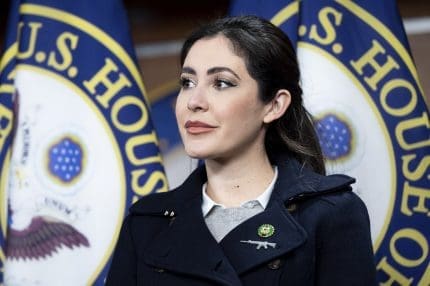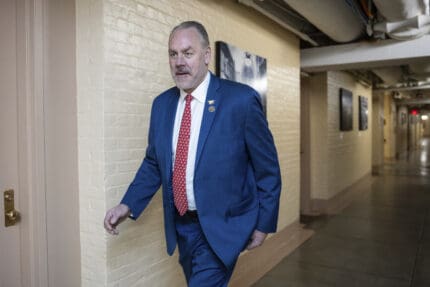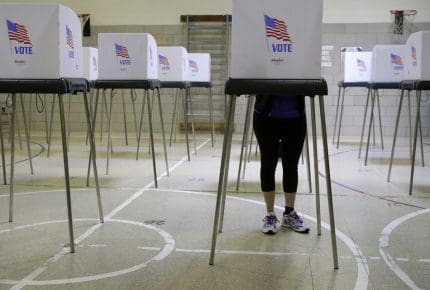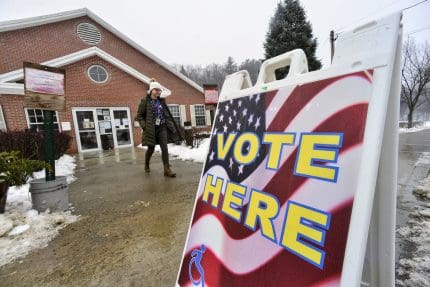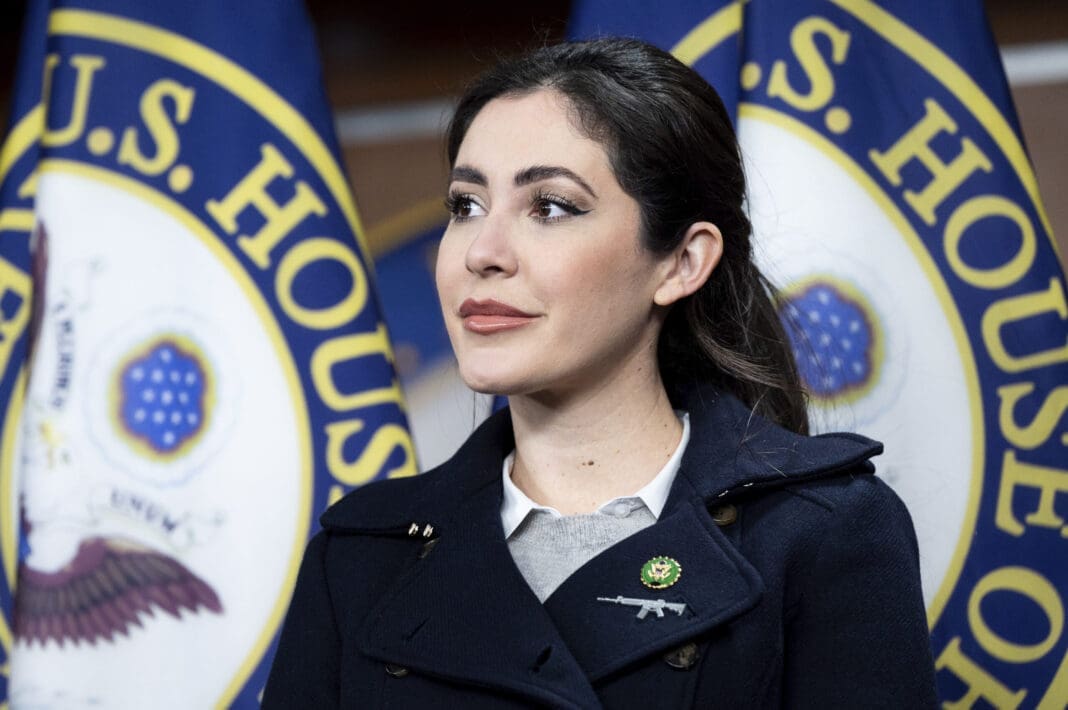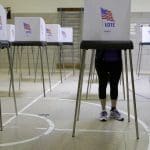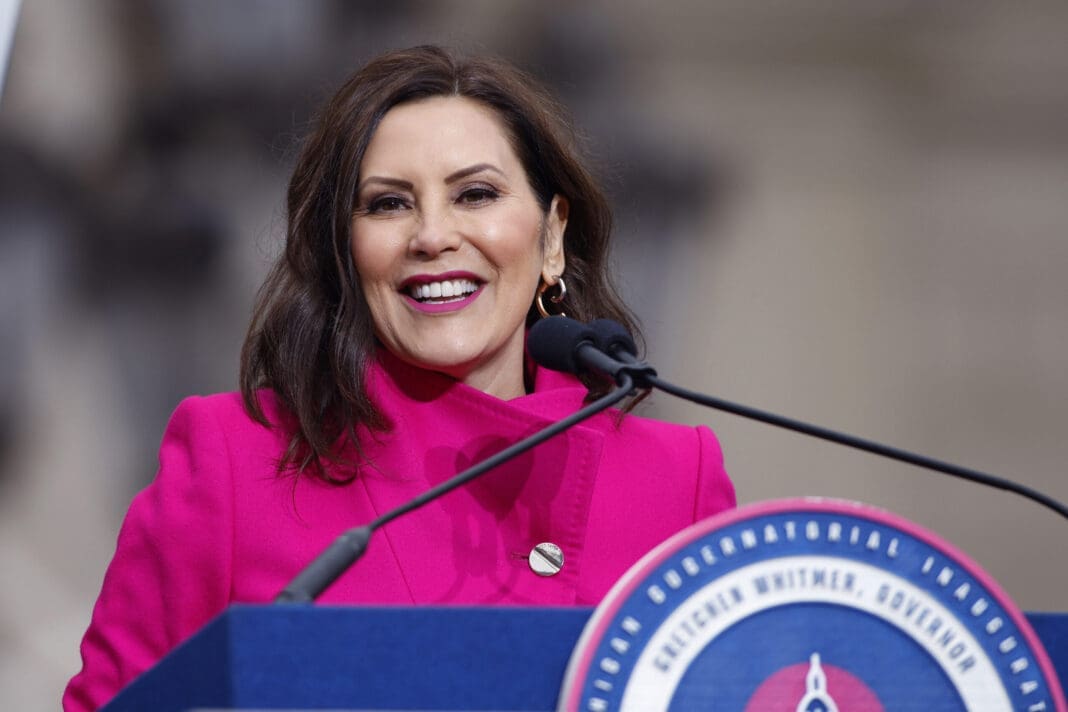Domestic workers face significant hurdles during COVID-19
‘We are frontline workers too.’
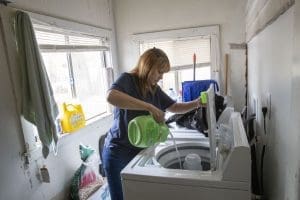
Terry Villasenor lost her job as a caregiver in California recently amid the ongoing COVID-19 pandemic. Her husband also lost his job as a maintenance worker at a building in downtown Los Angeles around the same time.
Villasenor, a Filipino human trafficking survivor and worker leader at LA’s Pilipino Workers Center — which aims to build labor leaders in the domestic worker industry and also provides immigration and anti-human trafficking services — has been tested twice for coronavirus, as has her husband.
Twice the results came back negative.
They’re both still looking for work.
Villasenor’s experience is similar to that of the other 2.5 million domestic workers in the United States, many of whom have been furloughed as a result of the pandemic, or, in many cases, forced to make the decision to continue working in dangerous conditions or face homelessness.
According to the National Domestic Workers Alliance, over 90% of domestic workers — a category that includes caregivers, house cleaners, nannies, and home health aides — are women, and a vast majority are minorities and immigrants. Domestic work is also a multibillion-dollar global industry, yet domestic workers are overwhelmingly low-wage and as many as 23.4% of those workers live under the poverty line.
The pandemic has only worsened their situation.
The NDWA surveyed 28,770 domestic workers between March 27 and April 6 and found that 72% of respondents reported having no employment due to COVID-19.
That number is especially troubling given that most domestic workers — as many as 77% of those surveyed — are the breadwinners in their families.
A vast majority, 84% of those surveyed, said that they were uncertain whether they would be able to put food on the table and many others said they were unable to pay rent for April and faced eviction.
Despite working on the front lines of the pandemic, domestic workers in California, where Villasenor resides, are also excluded from most legal protections that other workers are typically afforded, according to a report by the UCLA Labor Center.
According to the center, The National Labor Protections Act, which recognizes the rights of employees to organize and join unions, excludes domestic workers in the state, as does the Occupational Health and Safety Act, which protects workers from health and safety hazards. Domestic workers are also excluded from anti-discrimination laws such as the Disability Act, the Fair Housing and Employment Act, and the Paid Family and Medical Leave Act.
Those regulations typically apply to workplaces with a certain number of employees, meaning they don’t usually apply to domestic workers employed in an informal, home setting.
Earlier this year, California State Sen. Maria Elena Durazo introduced the Health and Safety for All Workers Act (SB 1257), which would include domestic workers who had previously been excluded from most occupational safety protections.
However, the bill’s fate is unclear as the chamber won’t reconvene until May 11, leaving domestic workers vulnerable in the meantime.
Last month, California Gov. Gavin Newsom announced a $75 million dollar Disaster Relief Fund intended to support immigrant workers in the state, as well as an additional $50 million in pledged philanthropic funding intended for undocumented families.
“During this moment of national crisis, undocumented immigrants are risking their own health on behalf of the rest of us, saving lives as health care workers; caring for our loved ones; and growing much of the food we depend on,” Laurene Powell Jobs, founder of Emerson Collective, one of the groups pledging support for undocumented Californians, said at the time.
Thousands of other undocumented domestic workers, however, have not been so lucky.
Lack of PPE
Despite more than 1 million confirmed cases of coronavirus in the United States thus far, PPE shortages are still a concern for domestic workers around the nation.
With many states relaxing stay-at-home orders and opening back up for business, those returning to their jobs as caregivers, cleaners, and health aides are being forced to grapple with mounting dangers and a potential lack of adequate gear to protect themselves.
Gale Johnson is a Caribbean-born domestic worker in New York who serves as a community leader for the Carroll Gardens Association’s Hopewell Care program, which trains child care workers on organizing a cooperative to ensure their rights as employees, and a lead trainer for the We Rise Care training program, a workforce empowerment program seeking to elevate those rights.
Johnson, whose own grandfather and great aunt passed away recently from COVID-19, is also a single mother and the main breadwinner for her family.
She said in a phone interview that the biggest struggle for domestic workers right now is undoubtedly a lack of PPE, which endangers employees’ families.
“Some [people] may be working in situations where the client hasn’t told them that they are COVID-19 positive and instead are telling them they have a cold,” she said. “Most of these domestic workers live in spaces with generations of families, you don’t want to bring anything to your loved ones.”
She noted that “home health aides who are with an agency may receive PPE,” but not all domestic workers did.
“It takes a toll on their mental health because they either work or stay home without an income,” Johnson said. “Domestic workers have to push aside their health to keep working and provide for their families.”
Ariana Shindle, creator of We Rise Care, said in a phone interview that while domestic workers are considered “essential workers” under state stay-at-home orders, there is no guarantee that many will be provided adequate PPE, if at all, due to due to the fact that they often work in informalized, private settings such as the home.
Over half of the respondents in the National Domestic Worker Alliance survey, for instance, said they did not have health insurance and only 18% reported that they had regular access to masks.
Villasenor noted separately that, on top of everything else, domestic workers often come into contact with potentially harmful chemicals for long periods of time, particularly now during the pandemic, when sanitizing and disinfecting are crucial.
As she was speaking, she was scrubbing a pair of tennis shoes she had used at a coronavirus-riddled facility.
“It’s upsetting because… what about us? The caregivers, nannies, and domestic workers? We often hear about doctors and nurses but we are frontline workers too,” she said.
Trafficking concerns
In many cases, domestic workers face the choice of losing their jobs or staying at the care facilities or households where they’re employed indefinitely, as stay at home protocols continue. This has raised concerns among the domestic worker community surrounding potential instances of trafficking, forced labor, and labor exploitation.
Aurora Andalajao is the director of the Anti-Trafficking Program at the Pilipino Workers Center. She’s worried about the potential increase of caregivers becoming trafficking victims due to living full time at their workplace, where they may be susceptible to abuse.
“Domestic workers are prone to trafficking as they work under the shadows,” she said in a phone interview. “Traffickers may take advantage of the [pandemic] and threaten victims by saying ‘We need to detain you because you’re safer here’ or ‘If you take public transport you’ll be sick.'”
She continued, “It’s just like how domestic violence victims are trapped with their abusers being in the house. There’s going to be double the threat during this [pandemic] for trafficking, because people are bonded to the house.”
Villasenor, who said she herself had been a victim of trafficking previously, noted separately that domestic workers, particularly undocumented domestic workers, may be “threatened and told that if they leave the client’s household, they will either ‘catch the virus or be caught by immigration.'”
“If they stay,” she added, “they are locked in the client’s home like a modern slave, working 24 hours a day, with no sleep and no regulations.”
Out of a job — and a home
Andalajao said she recently spoke to a domestic worker who went with her client’s family to their vacation home in the Hamptons. At first, the woman felt safe being there. Then, her employer got sick and demanded she continue working with no gloves.
The worker eventually left her job and is now unemployed.
“Domestic workers think, ‘If I defy my employer now, I’m going to be homeless so I’m not going to my apartment,'” Andalajao said.
Domestic workers are particularly vulnerable to homelessness during this time in general, she added.
She recounted the story of a domestic worker in the United States on a T visa — a visa given to immigrants who have been victims of human traffickers in the United States and assist law enforcement in the investigation of such cases — who had just lost his job and was now homeless even though he had not come in contact with a COVID-19 positive individual.
Villasenor, who has also experienced homlessness, said she too had learned of a domestic worker not being allowed back in his apartment by his roommates because they were scared he may have gotten COVID-19 from his workplace.
He has been sleeping in his car ever since.
While caregivers are having to make the difficult choices to stay in their workplaces or risk being let go, other domestic workers are facing a different challenge: being fired and refused entry into their workplaces at all.
“Most of us have been temporarily fired or let go from our jobs as house cleaners, we’ve been told not to come to work by our employers… and it’s not just domestic workers, it’s gardeners and construction workers who are all undocumented and pay taxes. It’s like our contributions don’t matter,” said Evelin, a house cleaner in San Francisco and an activist with Mujeres Y Activas.
Deysi, a house cleaner in Sonoma County and an activist with the Women’s Action and Solidarity Alliance, agreed.
“It’s sad here in California that we have lost our jobs and sources of income, and even though we pay taxes here, we don’t get support apart from the new stimulus bill,” she said. “We feel that we are fundamental to this economy but we are excluded from the safety net that all workers need to survive this crisis.”
Both women requested that only their first names be used due to their undocumented status.
In the meantime, domestic workers are mobilizing to try to take care of their community. The Pilipino Workers Center is distributing care packages for domestic workers around Los Angeles and welcomes all, regardless of ethnicity, to seek help from the worker’s center if needed.
The National Domestic Workers Alliance is also providing $400 in aid for domestic workers who are experiencing hardship due to the COVID-19 pandemic as part of its Coronavirus Care Fund.
Domestic Workers within California also continue to fight for SB 1257.
“Now is the time for the immigrant community to push on your elected officials and stand up for ourselves. We don’t have the luxury to just stay home and do nothing. We’ve shown that the immigrant community is strong and we can achieve a lot together,” said Evelin.
Published with permission of The American Independent Foundation.
Recommended

Biden calls for expanded child tax credit, taxes on wealthy in $7.2 trillion budget plan
President Joe Biden released his budget request for the upcoming fiscal year Monday, calling on Congress to stick to the spending agreement brokered last year and to revamp tax laws so that the “wealthy pay their fair share.”
By Jennifer Shutt, States Newsroom - March 11, 2024
December jobs report: Wages up, hiring steady as job market ends year strong
Friday’s jobs data showed a strong, resilient U.S. labor market with wages outpacing inflation — welcome news for Americans hoping to have more purchasing power in 2024.
By Casey Quinlan - January 05, 2024
Biden’s infrastructure law is boosting Nevada’s economy. Sam Brown opposed it.
The Nevada Republican U.S. Senate hopeful also spoke out against a rail project projected to create thousands of union jobs
By Jesse Valentine - November 15, 2023









